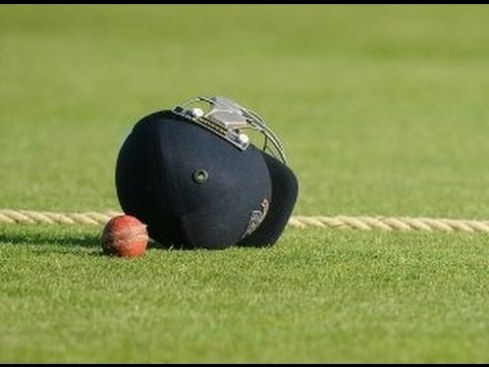In every game or sport, the rules are devised first. Following the same protocol, even cricket has witnessed several rules being made and altered over the years.
There have been rules that have prevailed since the sport's inception, while some of the reasons have been enhanced to an extent that there are no margins of error.
However, do you know every rule that happens to be used at some point or the other in cricket? If yes, then great but with such a plethora of distinct rules, it is an arduous task to have all the rules of cricket at the back of your mind.
Thus, today, we will have a look at some of the most peculiar rules in cricket.
Penalty of runs
In cricket, only the wicket-keeper is permitted to wear gloves from the fielding side. However, did you know that in case if anyone else from the outfield players wears a glove even for 5-10 seconds, the fielding side can be penalized, with runs being awarded to the batting team.
One of the incidents that took place involved Australia's Matt Renshaw who wore the gloves of the wicket-keeper that were on the ground (sometimes wicket-keepers take off their gloves while chasing a ball to avoid a boundary), and he ended up being bewildered by the fact that his side ended up gifting five runs to their opponents.
The five-run penalty is awarded to a side in many other cases. Let's have a look at them one by one. In case of a player gets injured on the field while fielding, he/she is permitted to go off the field and have a substitute instead.
However, in case a player wants to return to the field, it is mandatory that the umpires permission is taken.

There is also a penalty awarded to the batting side if the ball hits any equipment of the fielding team, it could be the wicket-keeping gloves, or sunglasses, etc.
In fact, a penalty also exists in case a fielder purposely kicks the ball outside of the boundary rope. The penalty runs awarded in each case are five.
A classic example of this incident was the India vs South Africa series when Hashim Amla knocked the ball for a single but Virender Sehwag kicked the ball outside the boundary to avert the single and ensure that Morne Morkel, who was a tailender batsman comes on strike.
Another case when penalty runs are awarded is when any fielder fake fields which is called fake fielding. A fielder is constrained to show an impression of throwing the ball even though he doesn't have it as it prevents the batsman from scoring runs, going against the spirit of cricket as well.
The 3-minute rule
Whenever a batsman gets out, the next batsman is supposed to be ready to bat within the next three minutes. If he fails to do so, the opposition skipper can object and the batsman can be adjudged out or "timed out".
In a Test played between India and South Africa in 2006-07, Sachin Tendulkar had been off the field due to some reasons. Once it was India's turn to bat, Sachin could've got ample time to get prepared to bat but two early wickets did not provide Sachin enough time to recover and we were very close to see the first batsman to get timed out.
However, it was Sourav Ganguly who came to bat after six minutes but wasn't given out, do you know why? It was a very generous act by the opposition captain Graeme Smith who did not object, a perfect example of keeping the spirit of the game alive.
The Bails theory
A lot of people are aware of the fact that a batsman cannot be given out even if the ball hits the stumps but the bails remain intact. However, what remains unknown to people is that a match can proceed without the presence of bails on the top of the stumps.

It is the call of the umpires whether or not to allow the game to continue and one such incident took place in 2019 in the fourth test between England and South Africa.
In the second session of a day's play, umpires continued with the game without the bails as high winds speeds were experienced in the stadium.
A helpful gesture could hurt too
Sometimes a batsman defends a ball and as a friendly gesture helps the fielders by returning the ball.
However, a note for all batsmen that such things shouldn't be avoided but they need to ensure that you have any of the fielder's consent. In case if you help a player by giving him the ball, and he objects then despite the friendly act, it will be you who will lose your wicket.
Surprisingly, this situation occurred in a U-19 World Cup when a Proteas batsman Jiveshan Pillay was given out because he returned the ball to the keeper. However, he hadn't taken the permission of any fielder and thus, paid the price by losing his wicket.
Umpire Position
We have often seen the umpire at the striker's end standing on the leg side of the batsman. However, it not a problem for the fielding side, then the umpire can also stand on the batman's offside if the fielding skipper gives the green signal.
Ball obstruction in the air
Another rule that seems very strange is that if a ball hits an obstacle or any object in the air then it's a no-ball. We have seen 2-3 incidences when the ball has hit the spider cam and thus, the ball was deemed a "dead ball."

However, another incident that showed the other side of the rule was when Mike Hussey hit the ball for a six and the ball hit the roof of the stadium and was still called a dead ball, despite the ball being outside the bounds. Weird, isn't it?
What are your thoughts? Let us know via our social media handles. Follow us on Instagram and Twitter for memes, regular updates, and more. We bet you won't be disappointed.
Stay tuned for more updates.
Cover Credits CricketAustralia






